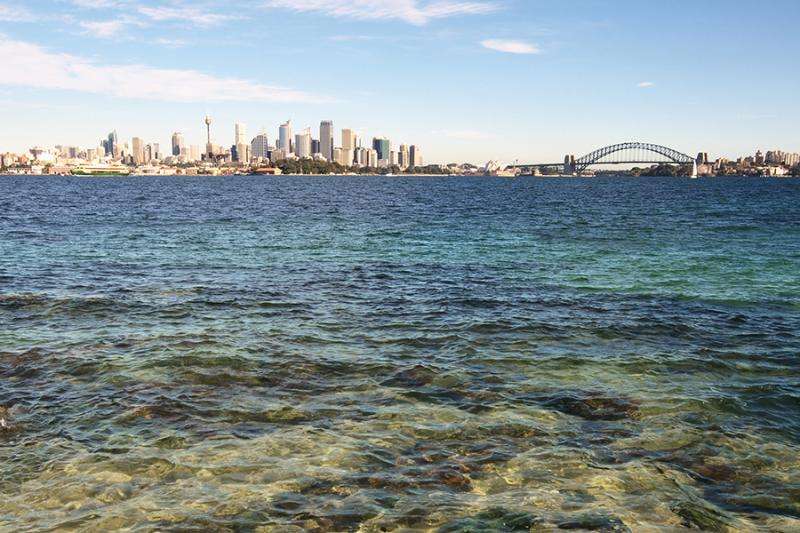Pathogens in Sydney Harbour like it hot but not too salty

A group of pathogenic marine bacteria, responsible for many more deaths worldwide each year than sharks, reside within Sydney Harbour, UTS scientists have found. The presence of pathogenic bacteria from the Vibrio genus within Sydney's heavily used harbour suggests that it, and other vulnerable coastal ecosystems, may be at risk of future pathogen outbreaks, particularly under the spectre of environmental stress and changing climate.
Although not as conspicuous as charismatic marine animals and plants, bacteria play an important role in the function of marine habitats. Most species are harmless to humans and provide valuable ecosystem services. However, some species are pathogenic and can pose a significant threat to both marine organisms and human health.
This important study reveals the widespread occurrence of a key group of marine pathogens – bacteria from the Vibrio genus, a group of bacteria that includes the causative agent of cholera – within the Sydney Harbour estuary.
"We believe our observations are essential for predicting future risks and hotspots for pathogen outbreaks," says lead author Dr Nachshon Siboni, a marine microbial marine ecologist in the Ocean Microbes and Healthy Oceans Research Program within the Climate Change Cluster (C3) at UTS.
The multidisciplinary research team, involving a UTS collaboration between C3 and the i3 institute, recorded several sites within Sydney Harbour where pathogenic strains of Vibrio occurred. Specifically they observed significant numbers of Vibrio vulnificus, an organism that can cause severe gastrointestinal illness, through consumption of contaminated seafood, and flesh-eating infections in swimmers.
"This pathogen is responsible for 95 per cent of all seafood-related deaths in the United States and carries a mortality rate of approximately one in two infected individuals," says Dr Maurizio Labbate from the i3 institute.
Like many humans, this pathogen prefers warmer waters and is most abundant during summer.
"We saw significant shifts in the abundance of the Vibrio community with both location and season, with much higher numbers in summer, which is consistent with other studies showing Vibrio species prefer warmer waters. Salinity is also a key factor," says Dr Siboni.
The team also observed significant concentrations of V. cholerae in almost three-quarters of the samples analysed. While none of the V. cholerae strains observed in Sydney Harbour corresponded to the toxigenic strain responsible for the disease of cholera, some strains of V. cholerae can cause milder gastrointestinal illness and skin infections. V. cholerae also appears to prefer warmer waters and is most abundant during summer.
The team concluded that warm summer conditions corresponding with high Sydney summer rainfall, which typically reduces salinity levels and adds nutrients, could provide a "perfect storm" that favoured Vibrio outbreaks.
The results of this study, published in Frontiers in Microbiology, are timely given that Vibrio-related infections in coastal ecosystems appear to be increasing worldwide, with models showing that elevated water temperature is a key factor.
As Chief Investigator Associate Professor Justin Seymour points out, this is particularly pertinent in south-eastern Australia where seawater temperatures are warming faster than anywhere else in the Southern Hemisphere.
"This study goes some way to filling the severe data gaps around the occurrence and distribution of pathogenic Vibrios within the Australian marine environment and the environmental processes underpinning them," says Associate Professor Seymour.
"Given the potential for these species to cause serious illness in humans as well as disease in a wide range of marine organisms including fish, corals and oysters, understanding when, where and why outbreaks of pathogenic Vibrios will occur is essential for public and ecosystem health management."
More information: Nachshon Siboni et al. Spatiotemporal Dynamics of Vibrio spp. within the Sydney Harbour Estuary, Frontiers in Microbiology (2016). DOI: 10.3389/fmicb.2016.00460
Provided by University of Technology, Sydney

















